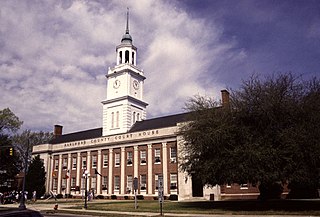
Bennettsville is a city located in the U.S. state of South Carolina on the Great Pee Dee River. As the county seat of Marlboro County, Bennettsville is noted for its historic homes and buildings from the 19th and early 20th centuries — including the Bennettsville Historic District which is listed on the National Register of Historic Places.
Thomas Franklin Lloyd is one of the founders of Carrboro, North Carolina. He was a prominent North Carolina industrialist who built the Alberta Cotton Mill in 1898 in Carrboro; the former factory building is now home to the Carr Mill Mall.

John Mark Verdier House, also known as Lafayette Building, is a building in Beaufort, South Carolina. It was built by John Mark Verdier, a French Huguenot, in 1804. The house typified Beaufort's gracious antebellum architectural style. It was a focal point of the town, a visible statement reflecting Verdier's significant wealth from trading indigo and growing sea island cotton.
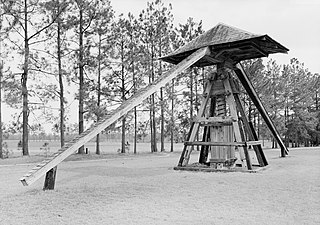
The Latta Cotton Press is an early mule-powered, wooden cotton press built around 1798. It was built and operated at Berry's Crossroad on South Carolina Highway 38 south of Latta in Dillon County, South Carolina. It was moved about 2.5 mi (4 km) west around 1950. It was listed on the National Register of Historic Places on November 15, 1972.

Price's Mill, also known as Calliham's (Callaham's) Mill, Stone's Mill, and Park's Mill, is a water-powered gristmill about 2 mi (3 km) east of the town of Parksville on South Carolina Highway 33-138 at Stevens Creek in McCormick County. Its name in the USGS Geographic Names Information System is Prices Mill. It was built in the 1890s and was named to the National Register of Historic Places on November 22, 1972. At this time, it was one of the few remaining water-powered gristmills in South Carolina.

Oaklyn Plantation is a historic plantation and national historic district located near Darlington, Darlington County, South Carolina. The district encompasses 40 contributing buildings, 6 contributing sites, 2 contributing structures, and contributing object. Founded as a forced-labor farm worked by black people enslaved by the land's white owners, it was one of the major plantation establishments of the county and served as the seat of the Williamson family for more than 200 years.

Ridgeway Historic District is a national historic district located at Ridgeway, Fairfield County, South Carolina. The district encompasses 31 contributing buildings in the town of Ridgeway. A majority of the buildings in the district were built between 1890 and 1915, the heyday of cotton production in the area. The district includes a commercial block with a predominance of simply ornamented two-story brick stores and a residential block with primarily asymmetrical, frame, weatherboarded houses lining the tree shaded streets. Styles include Queen Anne, Neo-Classical, Victorian, and Bungalow. Notable buildings include the J. Spann Edmunds House, Augustus Talley Moore House, Thomas Co. Store, Ruff Furniture Store, Dobson's Drug Store, Ridgeway Town Hall, Ruff's Gin Shop, James Team's Drugstore, and the Charlotte and South Carolina Railroad House.

Winnsboro Historic District is a national historic district located at Winnsboro, Fairfield County, South Carolina. The district encompasses 33 contributing buildings and 1 contributing site in the county seat of Winnsboro. The district features a wide range of architectural styles, from early simple frame houses that reflect utilitarian aspects of the Scotch-Irish, the first principal settlers, to pronounced styles such as Federal and Greek Revival. Many residences are typical upcountry frame houses, built in an L-shape with long piazzas running across the front. Notable buildings include the Town Clock, Fairfield County Courthouse, Thespian Hall, Fairfield Country Club, Mt. Zion Elementary, the separately listed Ketchin Building, Beatty House, Wolfe House, Kirkpatrick House, Neil House, and Williford House / Town Hall. The Fairfield Country Club was built in 1822 under the supervision of Robert Mills.
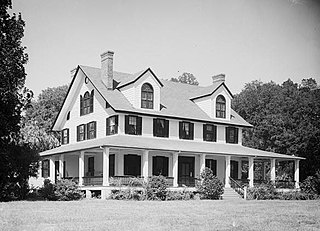
Pee Dee River Rice Planters Historic District is a set of historic rice plantation properties and national historic district located near Georgetown, Georgetown County, South Carolina.

Woodside Cotton Mill Village Historic District is a national historic district located in Greenville County, South Carolina. The district encompasses 278 contributing buildings and 2 contributing sites in an early 20th century urban South Carolina textile mill village. Centered on a mill founded by John T. Woodside in 1902, the district is located just west of the city limits of Greenville and is largely intact despite modernizations made by a succession of mill and home owners. The mill itself is a rectangular, brick, four-story building designed by J.E. Sirrine and built between 1902 and 1912. Eventually the mill became the largest cotton mill under one roof in the United States and one of the largest in the world.

City of Camden Historic District is a national historic district located at Camden, Kershaw County, South Carolina. The district encompasses 48 contributing buildings, 8 contributing sites, 2 contributing structures, and 3 contributing objects in Camden. The district is mostly residential but also include public buildings, a church, and a cemetery. Camden's architecture is classically inspired and includes examples of Federal, Greek Revival, and Classical Revival, in addition to cottage-type, Georgian, Charleston-type with modifications, and mansion-type houses. Several of the city's buildings were designed by architect Robert Mills. Notable buildings include the Kershaw County Courthouse (1826), U.S. Post Office, Camden Opera House and Clock Tower, Camden Powder Magazine, Trinity United Methodist Church, St. Mary's Catholic Church, Gov. Fletcher House, Greenleaf Villa, The First National Bank of Camden, and the separately listed Bethesda Presbyterian Church and Kendall Mill.

Lancaster Cotton Oil Company is a historic factory complex and national historic district located at Lancaster, Lancaster County, South Carolina. It encompasses five contributing buildings and six contributing structures associated with the Lancaster Cotton Oil Company established in 1907. The Lancaster Cotton Oil Company office and seed house burned in 1913 and were replaced as the company continued to grow. After the post-World War I decline the Lancaster and Kershaw cotton oil mills were among South Carolina's larger and more centrally located mills which survived into the 1930s and 1940s. Contributing resources include the Seed and Hull House (1937), Cotton Seed Processing Plant (1907), Oil Storage Tanks and Shed (1907), Cotton Gin (1907), and an office (1907).
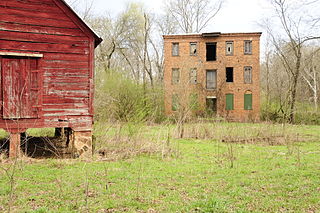
Calhoun Mill, also known as Rogers Mill, is a historic grist mill located near Mount Carmel, McCormick County, South Carolina. It was built about 1860, and is a three-story, with basement, brick building. Also on the property are contributing sheds and a cotton gin, a race, and a mill dam. A mill operated on the site since the 1770s.

Buffalo Mill Historic District is a national historic district located at Buffalo, Union County, South Carolina. The district encompasses 190 contributing buildings and 2 contributing structures associated with the Buffalo Mill textile mill complex and mill village. The mill complex includes the main mill, mill office, power house, ice factory, mill warehouse, company store, and company bank/drug store. The main mill building features applied stylized Romanesque Revival detailing. The mill village housing varies from large, free-classic, Queen Anne style supervisor's houses, to shingle-style bungalows, to simple, one-story, workers residences. The village also includes a school and a baseball field/park.

Winthrop College Historic District is a national historic district located on the campus of Winthrop University at Rock Hill, South Carolina. It encompasses 17 contributing buildings and 1 contributing structure constructed between 1894 and 1943. Architectural styles represented include Gothic Revival, Richardsonian Romanesque, Classical Revival, and Colonial Revival. Notable buildings include the separately listed Tillman Hall and Withers Building, as well as Alumni House, Phelps Dormitory, Thurmond Building, Byrnes Auditorium, Johnson Hall, and the President's Residence.

Highland Park Manufacturing Plant and Cotton Oil Complex is a historic industrial complex and national historic district located at Rock Hill, South Carolina. It encompasses three contributing building and two contributing structures in Rock Hill. The complex includes the Highland Park Manufacturing Plant, the Highland Park Cotton Oil Mill (1902), and the Highland Park Cotton Oil Mill Office (1902). They are the surviving buildings of a larger complex, including a gin and seed house, the rest of which have been demolished. Surrounding the original mill are portions of the mill village. The mill operated until 1968.
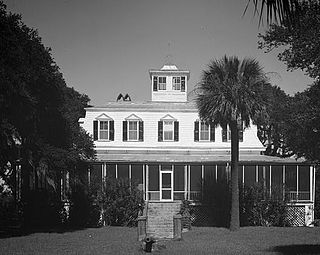
Sunnyside, also known as the Townsend Mikell House, is a historic plantation house located at Edisto Island, Charleston County, South Carolina. The main house was built about 1875, and is a 1 1/2-story, rectangular, frame, weatherboard-clad residence. It features a mansard roof topped by a cupola and one-story, hipped roof wraparound porch. Also on the property are the tabby foundation of a cotton gin; two small, rectangular, one-story, gable roof, weatherboard-clad outbuildings; a 1 1/2-story barn; and the Sunnyside Plantation Foreman's House. The Foreman's House is a two-story, weatherboard-clad, frame residence built about 1867.

Bost Mill Historic District is a national historic district located near Georgeville, Cabarrus County, North Carolina. The district encompasses 10 contributing buildings and 3 contributing sites associated with the Bost Mill grain and cotton operation. Notable buildings include the Bost Roller Mill, the John Bost House with its five outbuildings, the Bost Tenant House, the St. Paul's Methodist Church, and the Bost Cotton Gin.

Revolution Cotton Mills, also known as Revolution Division and Cone Mills, is a historic cotton mill complex located at Greensboro, Guilford County, North Carolina. The complex was built between 1900 and the mid-20th century and is an example of "slow burning construction." It includes 12 contributing buildings and 2 contributing structures. They include the main mill building, warehouses, weave room and machine shop, bleachery and dye room, storage/shipping/office building, and yellow brick chimney stack. The mill ceased operation in February 1982.





















